Written on: October 9, 2023 by Dan Vastyan
New York City still runs on steam heat. From the countless brownstones that line its streets to the high-rises and universities served by Con Edison’s steam utility, vaporized water reigns king in the five boroughs.
Saying that John Cataneo, Jr., and his brother, David, cut their teeth on cast iron steam boilers wouldn’t be a stretch. They were helping their father at work before their teen years. John Sr. founded Gateway Plumbing & Heating in the mid-1970s and the brothers took over in the late 1990s, carrying forward the legacy of quality and reliability.
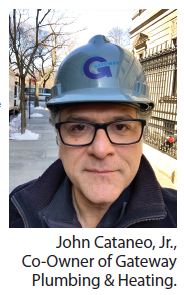
Gateway’s five trucks can be spotted in any New York City neighborhood, as often as not, hauling a steam boiler; they install 50 per year. As a residential and commercial company, word of mouth marketing is strong for Gateway, explained Cataneo Jr.
“Especially from one homeowner to another, because we quickly solve problems that are common among 100-year-old residential steam systems,” he said.
In-wall waterfalls
Gateway was referred to the owner of a two-family home in Brooklyn when their oversized oil boiler began leaking. The owner also reported uneven heat throughout the home and “waterfall noises” during heating season.
“The boiler had been repaired a dozen times and it just didn’t make financial sense to put another band-aid on it,” said Cataneo Jr.
“We gave them a bid to address the issues and started the work almost immediately.”
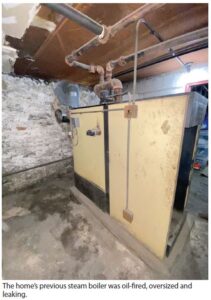
The home is four stories tall and divided into two residences—three landlord levels over one tenant space. Cosmetic renovations had been underway for four years. Its owners are recent immigrants from Germany, and steam heat was new to them, as was oil-fired heat.
“They had two options: keep the oil and we’d install a MegaSteam boiler, or convert to natural gas and install the new SteamMax, both made by U.S. Boiler Co.,” he explained.
Since the owners were familiar with gas, “We picked up a 175 MBH SteamMax,” Cataneo Jr. added.
Understanding steam
The existing boiler was a steel unit. After Cataneo Jr. performed an equivalent direct radiation (EDR) calculation, it became apparent that the boiler was oversized for the radiation in the home. Cataneo explained that the waterfall noise resulted from a condensate carryover issue. The old boiler and header weren’t effectively drying out the steam, leaving plenty of condensate within the system. The imbalanced heat was the result of old valves, traps and not enough air vents. Cataneo Jr. did find one nice surprise, however—the chimney had recently been lined.
“Once you really understand steam systems, the biggest challenge on this type of job is getting the old boiler out and the new boiler in,” he noted, adding that when dealing with homes built in the late 1800s or early 1900s, choices are rarely anything other than a small hatch cut into the foundation, or a narrow, often winding, sometimes unstable, staircase.
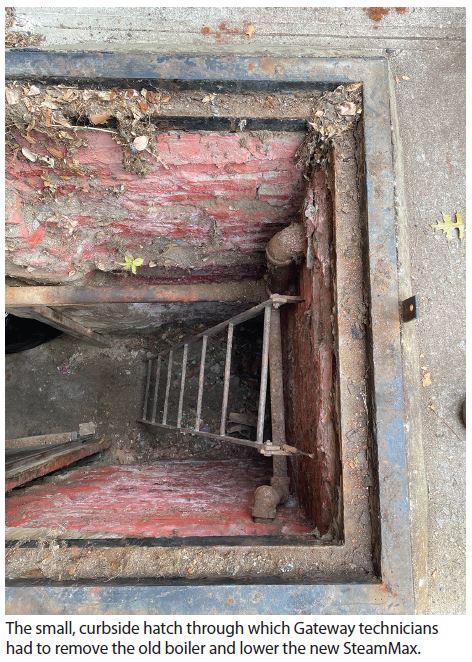
During the four-day install, Gateway provided a 50-gallon electric water heater for domestic hot water. Two technicians piped in a gas line, set the new boiler on concrete blocks, connected the boiler to an indirect water heater and assembled a new drop header.
Ideal configuration
According to Cataneo Jr., the SteamMax was very easy to install. The water heater was piped to a set of tappings below the water line for that purpose.
When designing the SteamMax, U.S. Boiler Co. included many features intended to make it more resilient to harsh water conditions, such as removing heat transfer pins at and above the water lines, widening waterways and replacing the conventional lance port burner with a high-tech stainless steel burner similar to those used on a modulating boiler.
“One unique feature of this boiler that I really appreciate is that the steam risers are not on the last cast iron section on either side of the boiler,” stated Cataneo Jr., noting that risers are instead placed on the penultimate sections, giving the installer an advantage since it reduces the length of the header.
“This means less pipe, but more importantly, the header occupies less width above the boiler, giving us more room to configure our system risers,” he noted.
“To me, this seems like a more natural place for the steam to exit, closer to the center of the boiler; this is because steam got into the header very quickly; the boiler seemed very responsive and it heated up more quickly than what I’ve come to regard as typical.”
Placing the risers closer to the center of the boiler also reduced water velocity, water impact and hot spots on the walls of end sections. This stabilized the waterline and reduced the repeated wetting and drying that can encourage chloride corrosion.
Dry steam & happy homeowners
Gateway also addressed the system imbalances throughout the home by adding two main air vents and swapping out old air vents on the radiators from room to room. Creating dry steam eliminated a great deal of the condensate carryover. Cataneo Jr. attributed this, at least in part, to the design of the new boiler, which includes a larger steam chest. With less water going into the header, there’s very good separation of steam from condensate before steam even leaves boiler.
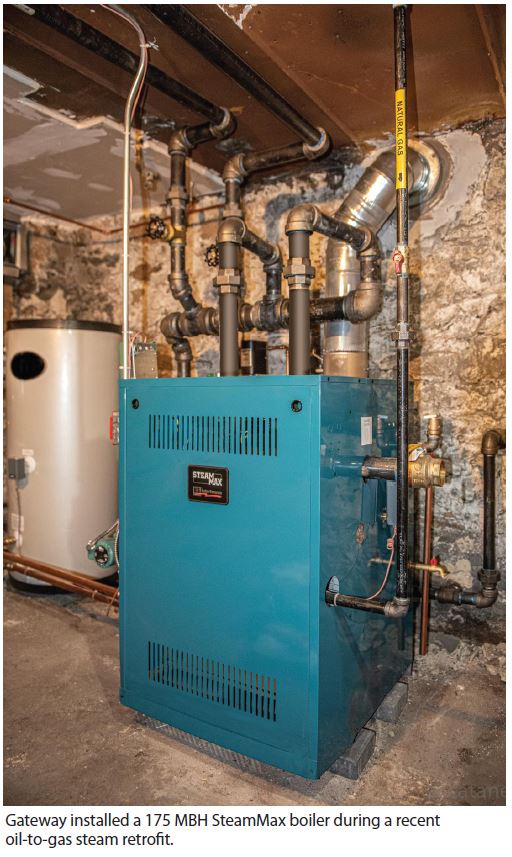
“The header takes care of the rest, but with the SteamMax, you’re starting from a healthier place; this is now my boiler of choice for gas-fired steam,” he added.
The homeowners are thrilled with their new system. Cataneo Jr. admits that they were skeptical at first, given the brand-new boiler design. Now, they’re over the moon with how warm, balanced, quiet and responsive the system is.
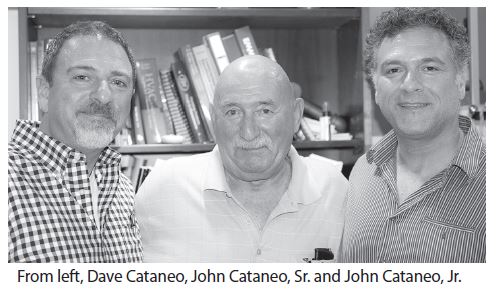
“There will be some fuel savings, but with the conversion to gas from oil, and with constant renovation going on in the home, it’ll be hard to quantify,” explained Cataneo Jr.
“We did reduce the installed capacity by more than 30%, and as all steam installers know, matching input to EDR is vital,” he concluded. ICM
Dan Vastyan is President of Common Ground, based in Manheim, PA.